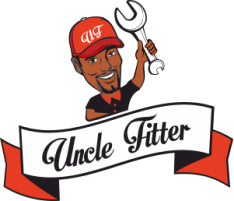Driveshaft Repair
What is the Driveshaft all about?
The driveshaft transmits the power (torque) created by the engine to the front (front wheel-drive), rear (rear wheel-drive), or front and rear (four wheel-drive) of the vehicle as required. A 4WD vehicle may have two driveshafts.
Keep in mind:
- A four wheel-drive vehicle may have two driveshafts, in which case you may only need one replaced.
- A vehicle with modified height will run a greater risk of having a damaged driveshaft.
- When your driveshaft is replaced, all other components should be checked for quality, and the U-joints should be properly lubricated.
- In some vehicles, it is more straightforward and affordable to replace the entire driveshaft than to replace a single component.
How it's done:
- Remove and replace drive shaft.
- Perform basic safety inspection.
- Test drive the vehicle.
Our recommendation:
When applicable, make sure all U-joints are lubricated during a major service. This will extend the life of your driveshaft.
What common symptoms indicate you may need to replace the Driveshaft?
- A clunking noise when you accelerate or shift between drive and reverse.
- Vibration when driving.
- Squeaking noise while driving.
How important is this service?
A driveshaft is responsible for transferring power from a vehicle’s transmission to its wheels. The driveshaft receives the torque from the transmission, and uses it to turn the wheels. As the driveshaft gets damaged, it doesn’t do its job as well, which puts undue pressure on other parts of the vehicle, which can cause damage. When the driveshaft ceases working entirely, the vehicle won’t be able to send power to the wheels, and you won’t be able to drive.
How can we help?
Tell us what the problem is (e.g the car is not starting or I need new shock absorbers). What kind of car you drive and your contact information.
© 2025 Uncle Fitter All rights reserved.



